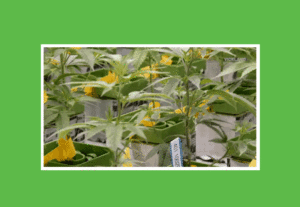Water (R)evolution : Could hydroponics help our economies (and your bottomline) evolve?
Author: Nicole Chaitan-Kissoon

My grandmother planted peas, rice, and corn to sell so she would always have some money in her pocket. Fast forward 2 generations and 2 years into a pandemic. Beyond doing a little farming on the side to supplement lost income, growing numbers of people are leaving the land for the water by turning to new farming technologies that work smarter rather than harder for something they can sell. Hydroponics is turning into some big business in our small places.
Hydroponics in a nutshell is growing plants using water-based, nutrient-dense solutions instead of soil. Hydroponic farming systems can build big farms that grow as much as 25% more crops, 2-5 times faster and with 90% less land space than growing in soil. That’s a bunch of numbers to mean great news for Caribbean economies where fertile farmland is extremely limited.
Improving food security i.e., feeling sure food is available and accessible
The Caribbean is one of the most food-insecure regions on the planet. Bugs and bad weather are one cause of insecurity in our food supply. When hurricane season comes ‘round, what small portion of our food we do grow is always at risk. However, growing crops contained in sturdy buildings with controlled indoor climates keeps the weather right and pests shut out tight.
Another key source of food insecurity in our region is that we are mainly small islands that import as much as 80% of what we eat. Depending that heavily on imported food leaves us vulnerable to global supply chain problems and we’re seeing the cost of that in our grocery bills as the pandemic goes on.
Bigger hydroponics operations could supplement our imports of common local vegetables and even reduce imports of crops that are hard to grow in our climate – for starters, a 12-acre hydroponic berry farm in Tobago is looking to go regional. Berrycove Limited has created a veritable hydroponic greenhouse whose initial production goal of 45,000 lbs per month includes a variety of organic berry fruits (strawberries, blueberries, raspberries, and blackberries).
If we’ve piqued your curiosity, whether you’re looking to start or upgrade your agro-biz, and your bank balance is calling for a revival, check out this rundown of the kinds of costs you can expect when beginning in hydroponics and some ideas for keeping them low.
Whether you’re just starting at home or contemplating scaling up to a commercial operation, there are methods like the Kratky method flexible enough to work for any size hydroponic operation. To compare systems before you get started, here’s a video that reviews a few for you. If hydroponics is already a hobby, these guys are serious about making it a business.





